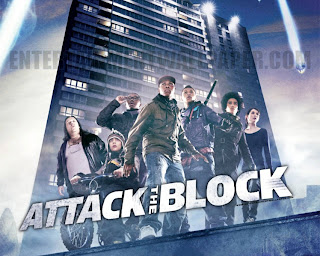As well as working on the preliminary task, we also worked on the thriller sequence together. As we started, it became clear that teamwork was going to be an issue. We would have to learn how to work together. We had contrasting views on what to do for our thriller video. We weren't listening to each other and we weren't sharing an equal work load. However, after talking things through with one another, we sorted out our differences and begun to work better as a team and as a result of that, more productively and begun to produce work more prolifically. Sharing our responsibilities was definitely the major factor in our success. This was something we hadn't done when doing our preliminary task. We decided that we would take different roles in different places but still offer our input on the other one's work. When it came to the directing, I took up that role and when it came to the editing, Shaun played a more important role.
When it came to organisation on the thriller sequence, I was a lot more thorough. After a poor preliminary task I concluded that the main reason why it was so poor was due to lack of planning and organisation. I was sure that I would not make the same mistake twice, so I planned furiously for the video. I did storyboards to ensure that when filming I would have a set idea of what I wanted on camera. This was something I hadn't done in the preliminary task. Another form of planning I did for my thriller sequence was location scouting. I had not done this in the preliminary task. I was scouting parks filled with trees and area's that were closed off so that the set would match the set on the storyboards. I was looking to create a tense and unnerving atmosphere through the use of wide open spaces and my protagonist being a victim of his environment. After days of searching for the perfect location I found the belstead brook.
Chantry park
Gipswick Park
The Belstead Brook
Pros:
- Lots of different parts of the area to film
- Well lit at night
- No sound pollution
- Closed off, not much interruption by pedestrians
- Not too far from where me or shaun, my partner, live
Cons:
Gipswick Park
Pros:
- Good pathway that is closed off and secluded, good setting
- Wide open spaces to film in
Cons:
- Next to a main road, sound pollution
- Regularly visited, this would mean a lot of interruptions
Chantry Park
Pros:
- Good wide open spaces to film in
Cons:
- Has a climbing frame and a kid's play area, this would mean we'd be regularly interrupted and there would be sound pollution.
The other half of my improving process was the theoretical side of the course. This involved learning about the codes and conventions used by film makers in thriller films and why they are used. I studied the camera work in thriller films and why film makers use certain shots to reflect certain moods. For example, long shots are used to present a character as vulnerable. I also learnt the importance of sound. I saw through films like 'Psycho' and 'The Village' that whenever a tense moment is about to occur, there is a lack of sound to make the jolt or bang more terrifying for the audience. I learnt this technique from the farther of tension Alfred Hitchcock, who is pictured in picture 35, who once said "there is no terror in a bang, only in the anticipation of it". I applied this idea to my sequence whenever I wanted to create tension. I learnt that colour in a thriller was very important as certain colours represent certain things. For example, red represents passion and danger and black represents evil. I utilised this knowledge to its fullest by giving my protagonist a red jumper to signify to the audience that he will later find himself in danger. I also used the colour black when editing by using colour correction to desaturate the colour from the picture to make the woods look darker. This gives the impression that my protagonist is surrounded by evil which gives off an ominous feel.
After learning these conventions I had to learn about conforming these codes and conventions to meet my audience's expectations. I did this by studying my audience through a questionnaire and asking them what their interests were and whether they liked my thriller sequence. They gave answers like enigma codes and a sound track that isn't contrapuntal. This form of planning gave me a better understanding of my target market and assisted me in my film making as I knew what they wanted out of a thriller.
Taking everything into consideration, what I have learnt from the mistakes I've made, research and planning I've done it has made me a better film maker as I gained the tools to understand the codes and conventions of thrillers and I put the effort in when it came to the actual filming.








































